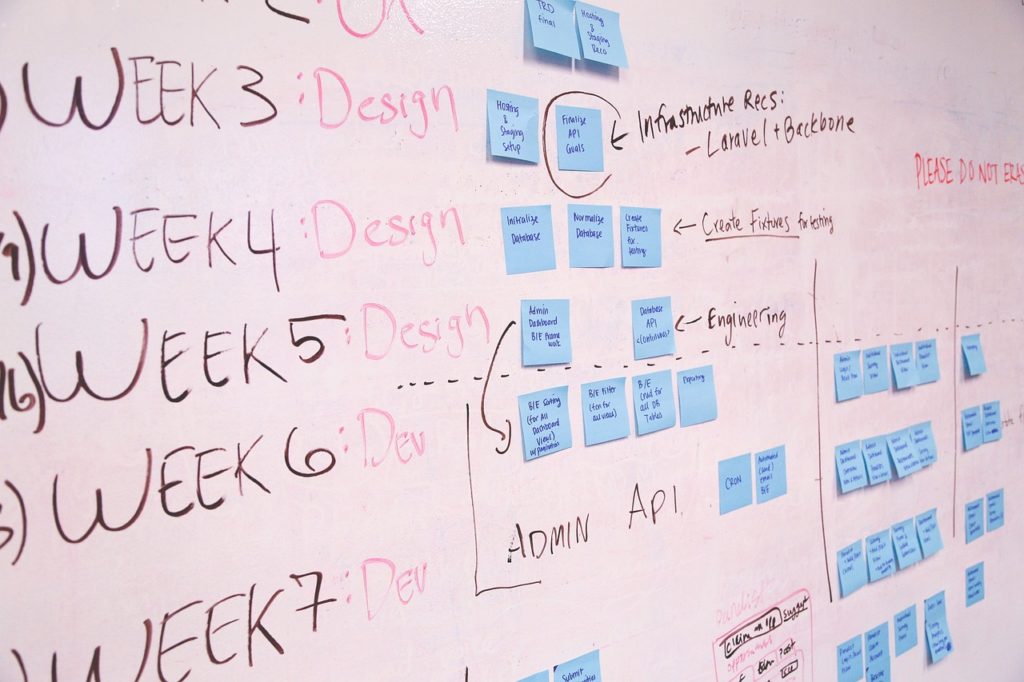Agile Development: Navigating the Ever-Changing Digital Landscape
In the ever-evolving digital realm, traditional project management often falters amidst complexity and rapid change. This is where Agile development, a revolutionary approach, comes into play, offering a dynamic and flexible path to success.
The Agile Philosophy: A Game Changer in Digital Projects
Agile development isn’t just a methodology; it’s a mindset that revolutionizes project management. It contrasts starkly with rigid, linear approaches, introducing a fluid, adaptable strategy. This philosophy is grounded in the Agile Manifesto, which emphasizes individuals and interactions, working software, customer collaboration, and responding to change.
Embracing Change: The Core of Agile
In an Agile framework, change isn’t just anticipated; it’s welcomed. This adaptability sets Agile apart, making it ideal for the digital world where user needs and market trends rapidly evolve. Agile’s iterative process allows teams to adapt their strategies and outputs in real-time, ensuring the final product remains relevant and valuable.
The Agile Ecosystem: Roles and Responsibilities
- Product Owners: Visionaries who guide the project’s direction, focusing on user needs and product viability.
- Development Teams: The backbone of Agile, these cross-functional teams bring diverse skills to create and iterate the product.
- Scrum Masters: Facilitators who ensure the team adheres to Agile principles, helping overcome obstacles and streamline processes.
- Stakeholders: Their feedback and insights are invaluable in shaping a product that meets and exceeds market expectations.
- Clients: Integral to the Agile process, clients provide ongoing feedback, ensuring the project aligns with their vision and needs.

Agile Methodologies: Scrum, Kanban, and beyond
Several methodologies fall under the agile umbrella, each with unique features and applications:
- Scrum: Known for its structured approach with sprints, Scrum encourages regular reflection and adjustment.
- Kanban: This method emphasizes continuous delivery without overburdening team members, focusing on workflow and efficiency.
- Extreme Programming (XP): XP hones in on technical aspects and software quality, with frequent releases and a focus on customer satisfaction.
Agile in Action: The Sprint Cycle

The heart of Agile is the ‘sprint’, a short, time-boxed period where a specific set of tasks are completed. Sprints allow for quick adjustments and frequent reassessments, ensuring the project remains aligned with client needs and market demands.
User Stories: Crafting a Customer-Centric Approach
Agile places significant emphasis on user stories, which are simple, yet powerful tools to capture a product feature from an end-user perspective. These stories help keep the focus on delivering real value to users, ensuring the product aligns with their needs and expectations.
Agile Tools and Techniques
Numerous tools and techniques facilitate the Agile process:
- Daily Stand-ups: Short daily meetings to align the team and address any immediate challenges.
- Backlogs: Prioritized lists of tasks and features, providing a clear roadmap for the project.
- Retrospectives: Regular reflections on what went well and what can be improved for future sprints.
Why Choose Agile?
- Enhanced Customer Satisfaction: Agile’s emphasis on customer involvement ensures the final product closely matches their expectations.
- Improved Product Quality: Regular testing and revisions result in a high-quality product that meets stringent standards.
- Increased Project Control: Frequent reviews and updates offer greater visibility and control over the project’s progress.
- Faster ROI: Agile’s focus on delivering working features in each sprint ensures earlier delivery of value, accelerating ROI.
- Agile projects are 70% more likely to be completed on time and within budget, according to the Standish Group.
- Faster adaptation to change: In a Harvard Business Review survey, 94% of Agile respondents felt their teams were better equipped to respond to changing market conditions.
Common Misconceptions about Agile
It’s important to dispel some myths about Agile:
- “Agile is Unstructured“: Agile is flexible but it also has clear processes and methodologies that provide structure.
- “Agile is only for Software Development“: Initially tailored for software, Agile principles are now effectively applied in various industries.
- “Agile Means no documentation“: Documentation is vital in Agile; the emphasis is on its relevance and efficiency.
Implementing Agile
Transitioning to Agile requires careful planning and consideration:
- Comprehensive Training: Ensure all team members understand Agile principles and practices.
- Tailored Agile Framework: Adapt Agile methodologies to suit your specific project needs and organizational culture.
- Embrace Agile Mindset: Encourage a culture of collaboration, continuous improvement, and openness to change.
- Agile Metrics: Measuring Success
To gauge the effectiveness of Agile implementation, consider metrics like sprint burndown, velocity, and lead time. These indicators help track progress and pinpoint areas for improvement.
Agile and Remote Work: A Perfect Match
In the era of remote work, Agile methodologies have proven particularly effective. Tools like digital Kanban boards and video conferencing facilitate remote Agile processes, ensuring team cohesion and project alignment.

Agile Development at BeCloudy: Your Partner in Digital Success
Agile development isn’t just a method; it’s a journey towards efficiency, innovation, and customer satisfaction. By choosing Agile, you’re not just managing a project; you’re embarking on an adventure in the digital landscape, with BeCloudy as your trusted guide. Join us in harnessing the power of Agile for your next project, and together, let’s reach new heights of digital success.
Would you like to start a project with us?
Turn your boldest ideas into thriving realities. We’re your all-in-one cloud partner. Let’s collaborate, innovate, and conquer the digital frontier together.